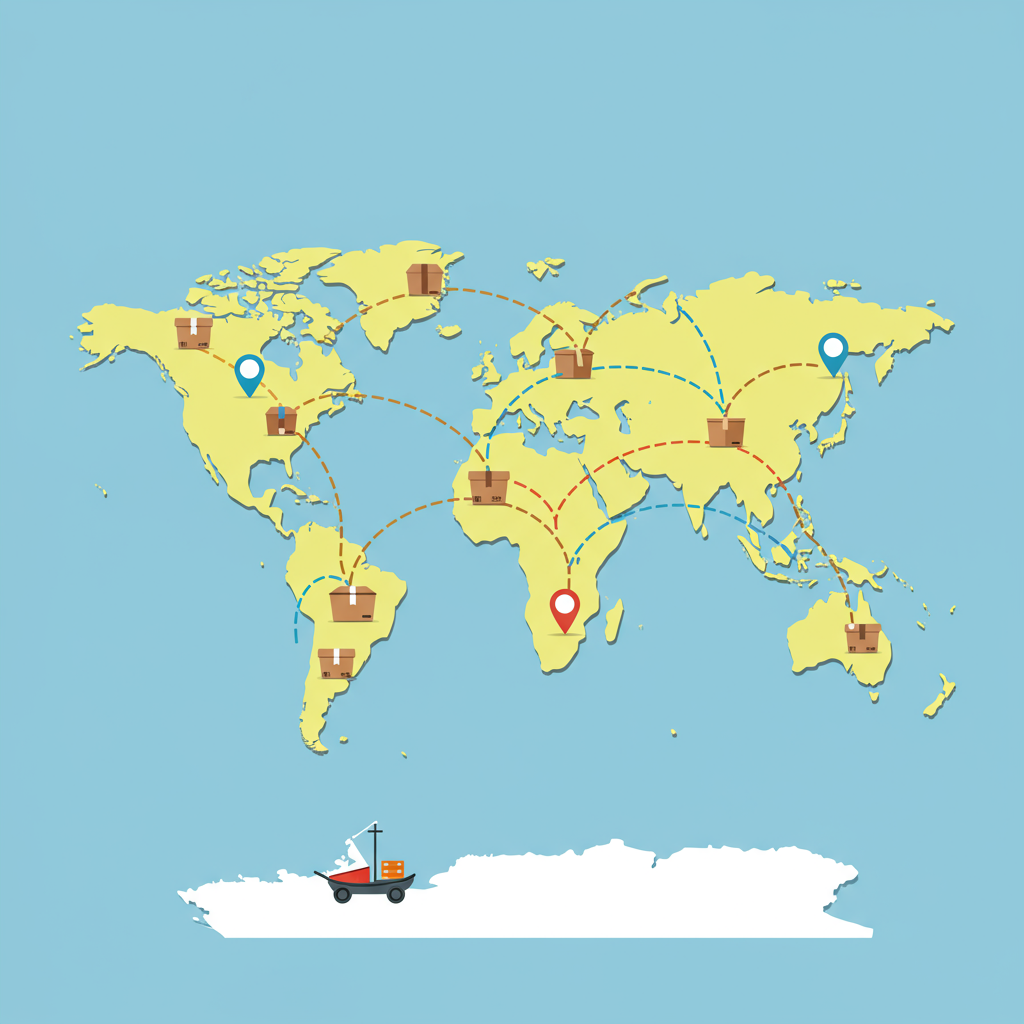My Comprehensive Guide to Expanding Your Store’s Reach Globally
As a Shopify merchant, I know the thrill of a sale. But imagine that thrill multiplied, reaching customers across borders and oceans.
Expanding your Shopify store to international markets isn’t just a dream; it’s a tangible growth strategy that I believe every ambitious merchant should consider.
However, I also understand that the thought of international shipping can feel daunting. Customs, duties, different carriers – it’s a lot to unpack.
That’s precisely why I’ve put together this comprehensive guide. My goal is to demystify the process and equip you with a robust Shopify shipping strategy for international orders.
I want to help you confidently navigate the complexities and unlock a world of new customers for your business. Let’s dive in.
First, I always recommend starting with thorough research. Understanding the specific markets you want to target is paramount.
Each country has its own set of import regulations, customs duties, and taxes. I’ve learned that what works for one nation might not apply to another.
You’ll need to identify any restricted or prohibited items for your chosen destinations. This step, in my experience, can save a lot of headaches down the line.
Next, let’s talk about shipping carriers. I’ve found that a mix of options often serves best.
Major international carriers like DHL, FedEx, and UPS offer reliable, albeit sometimes pricier, services with excellent tracking.
For more economical options, especially for lighter packages, I often look at national postal services like USPS (for outbound from the US) or their international counterparts.
When choosing, I weigh factors like cost, transit time, reliability, and the level of tracking provided. My customers appreciate transparency.
Setting up your shipping rates in Shopify is crucial. I typically consider a few models for international orders.
Calculated rates, often integrated directly with carriers via Shopify Shipping or third-party apps, provide real-time shipping costs based on package weight, dimensions, and destination. I find this to be the most accurate.
Flat rates can work for specific regions or product types, but I caution against them for highly variable international shipping costs. You don’t want to overcharge or undercharge significantly.
I also explore free shipping thresholds for international orders. This can be a powerful incentive, but I always ensure my margins can absorb the cost.
Now, let’s tackle the big one: customs duties and taxes. This is where many merchants get tripped up, but I’m here to simplify it.
You’ll encounter two main terms: DDU (Delivery Duty Unpaid) and DDP (Delivery Duty Paid).
With DDU, the customer is responsible for paying duties and taxes upon delivery. I always make this explicitly clear at checkout to avoid surprises and frustrated customers.
With DDP, you, as the merchant, collect the duties and taxes at the time of purchase and remit them. This offers a smoother customer experience, as there are no unexpected fees upon arrival.
I often use Shopify apps that help calculate and collect these duties at checkout for DDP shipments. It streamlines the process immensely.
Proper documentation is non-negotiable. I always ensure commercial invoices, packing lists, and any required customs declarations are accurately filled out and attached.
Using Harmonized System (HS) codes for your products is vital. These codes classify your goods and help customs officials determine the correct duties and taxes. I make sure my product listings have them.
Packaging also plays a role. I use sturdy, appropriate packaging to protect items during their long journey. Clear, legible labels are a must.
Once an order is shipped, I believe proactive communication is key. Providing tracking information immediately and offering updates builds trust.
My customer service team is trained to handle international shipping inquiries, from tracking delays to customs questions. Transparency is always my policy.
What do you think about these strategies so far? I’m always keen to hear other merchants’ perspectives.
Finally, consider your international returns policy. I know it’s not the most exciting part, but a clear, fair policy can significantly impact customer confidence.
While international returns can be complex and costly, I try to offer a reasonable solution, perhaps by providing store credit or a partial refund for certain situations.
Shopify’s platform itself offers robust features to help. I utilize shipping zones to define different international regions and assign specific rates.
I also explore the Shopify App Store for specialized international shipping apps that can assist with duty calculation, label printing, and even localized storefronts.
In my experience, a successful international shipping strategy isn’t a one-time setup; it’s an ongoing process of optimization.
I regularly review my carrier performance, shipping costs, and customer feedback to refine my approach.
By embracing international shipping, you’re not just sending packages; you’re opening your brand to a global audience.
I truly believe that with careful planning and the right tools, your Shopify store can thrive on the world stage.






